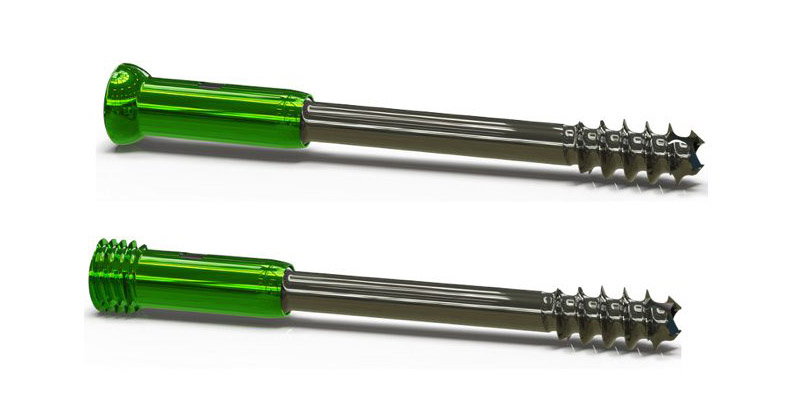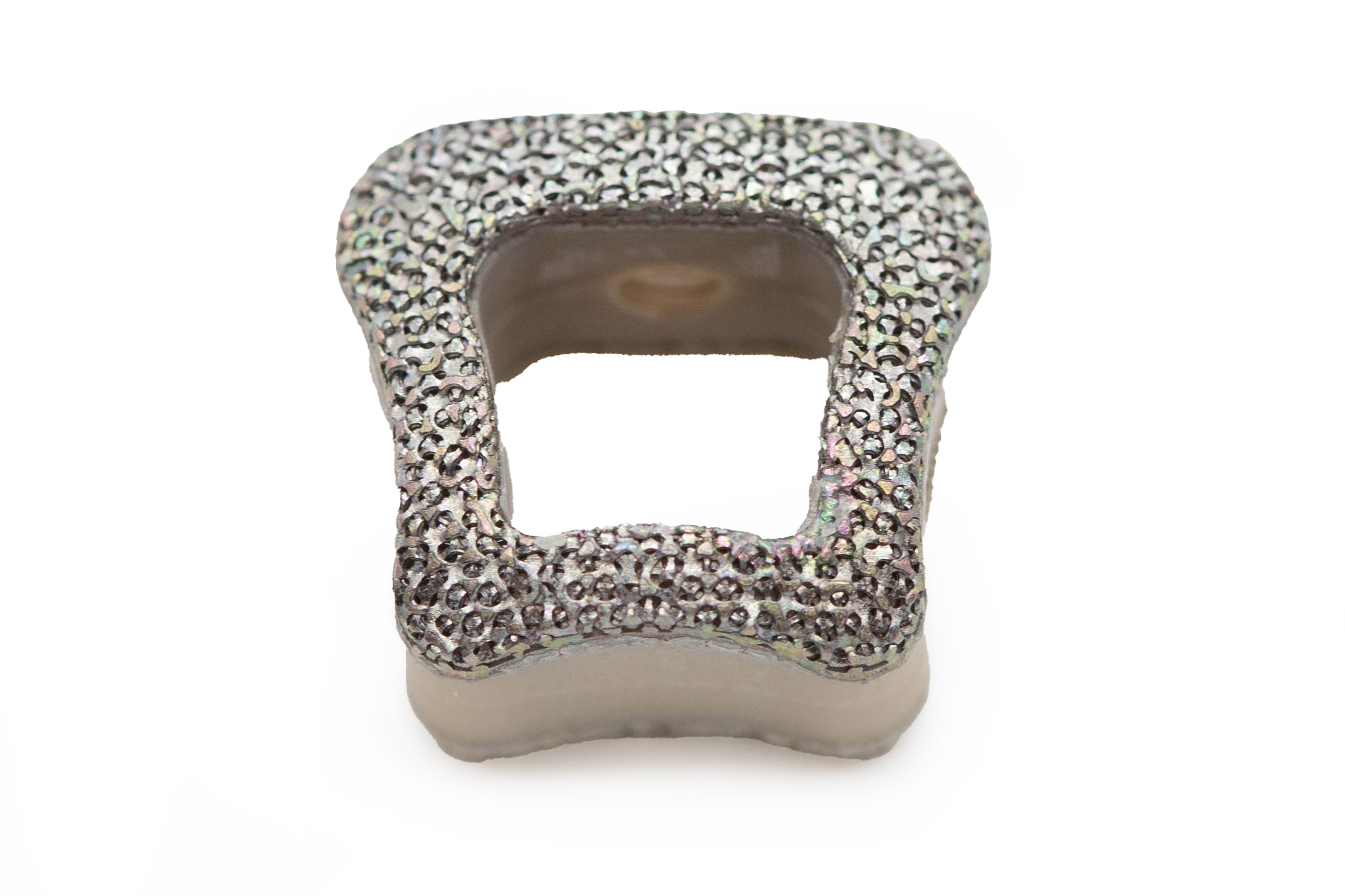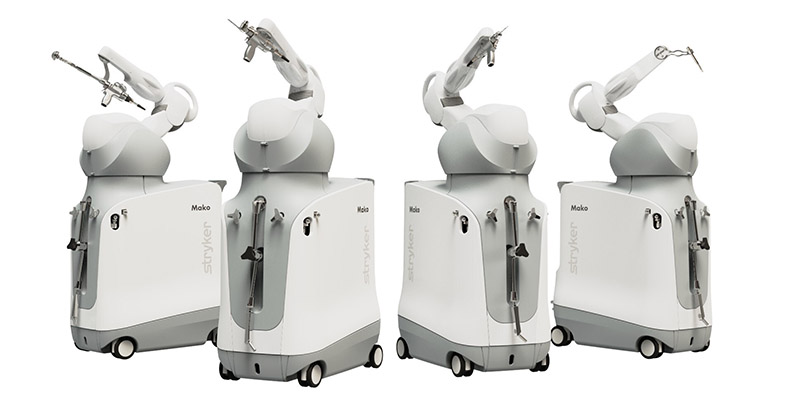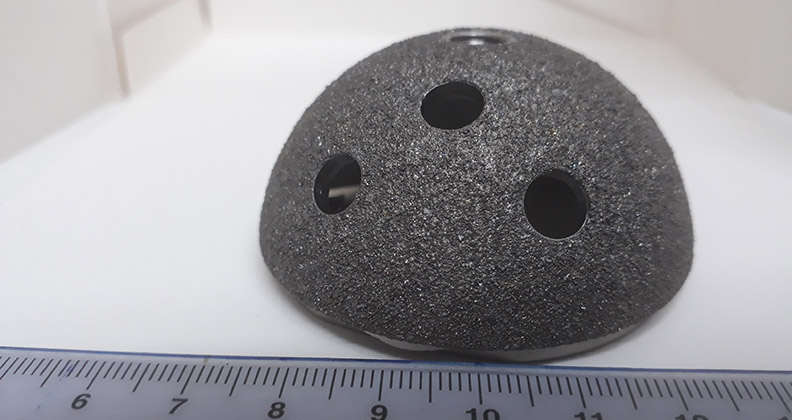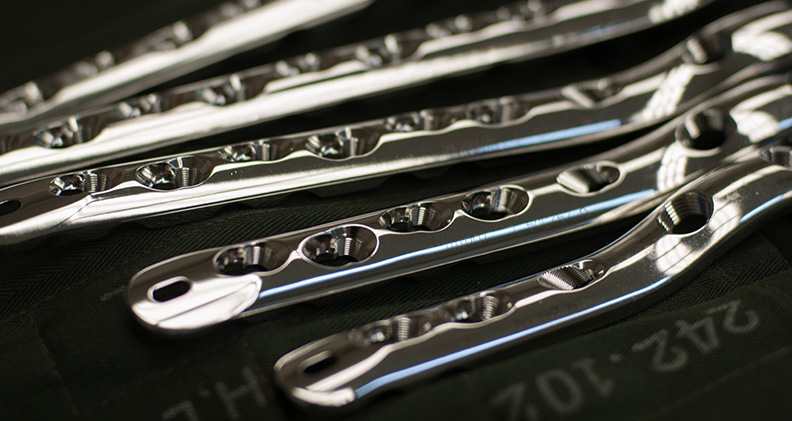
Material evolution continues to advance orthopedic implant designs. New developments have expanded the potential of titanium powders, enabled the engineering of bioactive and resorbable fiber-reinforced polymers and created superelastic devices with stiffness, strength and fatigue properties that overcome the limitations of conventional metals. When prototyping the next generation of orthopedic implants, these materials can take your iterations to the next level.
Maximizing Metal Powders
Sandvik Additive Manufacturing works with stainless steels, cobalt alloys and titanium, and is now beginning to explore zirconium alloys.
The company has investigated the impact of expanding the particle size distribution (PSD) of Ti-6Al-4V, a commonly used titanium alloy. The standard PSD for this alloy is typically 15 micrometers to 45 micrometers. Sandvick used a coarser cut — 45 micrometers to 90 micrometers — and printed samples on a Renishaw RenAM 500Q Flex system to test the density, microstructure, tensile strength, hardness and impact energy.
The team examined three layers of thicknesses (30, 60 and 90 micrometers) for the standard PSD, and 90 microns for the large PSD. All the experimental builds exceeded ASTM F136 requirements, reinforcing the potential of using coarser powder cuts without sacrificing quality.
The findings provide indications for ways to lower the cost and improve the productivity of using Ti-6Al-4V. “By using a wider PSD, you can lower your powder cost and increase your printing productivity with higher layer thicknesses,” said Rickard Sandberg, Product Manager of Metal Powder at Sandvik. “Moving from a standard 15-micron to 45-micron cut to a wider PSD can reduce the production cost by up to 40%, especially if you also find value in selling undersized fractions.”
Durability and Bioactivity
When strength is needed to support healing bones, metal implants are currently the go-to solution because fully bioresorbable polymer or composite materials aren’t yet strong enough to bear the required loads. That could soon change.
“We are developing a material that enables the production of strong, fully resorbable implants,” said Ville Ellä, D.Sc., R&D Director for New Technology at Arctic Biomaterials. “Patients can avoid a second surgery to remove the implant. Once the bone has healed, the implant naturally resorbs.”
Arctic Biomaterials’ proprietary X3 fiber composite comprises a mineral fiber that provides mechanical strength.
“The minerals in X3 fiber are closely related to those found in bone,” Dr. Ellä said. “So, when the fiber dissolves, it releases elements that the body already recognizes and uses.”
These mineral fibers are embedded in biocompatible polymers that are already widely used in surgical applications, resulting in a composite that is strong and fully resorbable. The material resorbs and actively contributes to the healing process.
“As the fiber degrades, it forms a layer of hydroxyapatite carbonate around itself,” Dr. Ellä said. “This bioactive surface interacts with surrounding bone tissue.”
This bioactivity mimics the benefits of readily available ceramic-based implant composites. “But ceramic composites don’t have the mechanical strength required for load-bearing implants,” Dr. Ellä said. “We’re seeing strength levels up to six times higher than any composite or polymer currently on the market.”
Dr. Ellä said the material’s modulus is higher than that of natural bone, making it well-suited for load-bearing applications. But, he added, it’s still lower than the modulus of metals to help minimize stress shielding.
The X3 fiber composite can be used in a wide range of implant designs and surgical indications, including extremities, trauma, sports medicine and neurosurgery. “What we bring to the market is a range of high-performance materials tailored for various processing methods,” Dr. Ellä said.
Arctic Biomaterials created a pelletized form of the X3 fiber that can be injection molded. The material contains short fibers for use in areas where high strength is not critical.
It’s a cost-effective option; the raw material accounts for only about 1.5% of the total implant cost.
The company also provides tape made from X3 fiber composite that’s suitable for winding, tape laying and compression molding for applications requiring higher mechanical strength. The material yield for an implant made from this tape is greater than 95%, according to Dr. Ellä.
Absorbable Magnesium
Fort Wayne Metals is working to develop absorbable magnesium alloys. The alloys are designed to degrade over time, like absorbable polymers, but because magnesium is a metal, it offers unique and more familiar mechanical characteristics.
“Magnesium is inherently lower in strength than titanium or cobalt chrome. There’s no getting around that,” said Adam Griebel, Senior R&D Engineer at Fort Wayne Metals. “But when compared to absorbable polymers like PLA, magnesium can be five to ten times stronger.”
Magnesium has about half the stiffness of titanium, but it’s an order of magnitude stiffer than PLA, meaning it flexes far less under load.
“That stiffness helps preserve device shape and stability,” Griebel said. “And because it’s a metal, if you use a well-made alloy, the toughness can be quite high.”
However, pure magnesium doesn’t offer sufficient strength for most applications, especially if you’re starting from a titanium-based design.
“To overcome that limitation, we add elements to create an alloy and increase magnesium’s strength,” Griebel said. “But unlike titanium, there’s no standardized alloy for absorbable magnesium. That’s what we’re developing.”
When it comes to optimizing absorbable magnesium alloys, choosing the right element is key.
“Certain elements work really well with magnesium,” Griebel said. “Some of the most favorable ones include calcium, manganese and zinc. They’re suitable to alloy into magnesium, and they’re also nutrient elements that the body already uses.”
Nickel-free Superelastics
Nitinol is known for its super elasticity, marked by the ability to transform between austenite and martensite crystal structures under stress and return to its original shape. “You can bend it significantly and it just pops right back,” Griebel said. “That makes it ideal for bone staples.”
But roughly 15% of the population has a nickel allergy or sensitivity, so Fort Wayne Metals developed a nickel-free nitinol alternative that still offers superelasticity.
The company developed a titanium-niobium-zirconium-hafnium-tin alloy that shows 3% to 4% recoverable strain. Griebel said it might not match nitinol’s 8% elasticity, but noted that it’s significantly more elastic than conventional titanium or stainless steel, which usually offer only 0.5% to 1%.
One of the key benefits of Fort Wayne Metals’ nickel-free beta titanium alloy is its ability to deliver substantial recoverable displacement, making it a viable alternative to nitinol for fracture fixation and load-bearing applications.
“In typical loading and unloading scenarios, the alloy provides strong compressive force across the fracture site,” Griebel said. “It has a bit more permanent deformation compared to nitinol, which springs back almost completely. But for a nickel-free material, the performance is very encouraging.”
Beyond its shape recovery capabilities, Griebel emphasizes that the material can support efforts to make devices smaller with materials that are stiffer and stronger.
Strength refers to how much stress the material can withstand; stiffness is how much it deforms under stress. By choosing materials with high stiffness and strength, device engineers can reduce component size without sacrificing performance.
“That’s a powerful way to drive innovation in implantable devices,” Griebel said.
DC
Dan Cook is a Senior Editor at ORTHOWORLD. He develops content focused on important industry trends, top thought leaders and innovative technologies.

